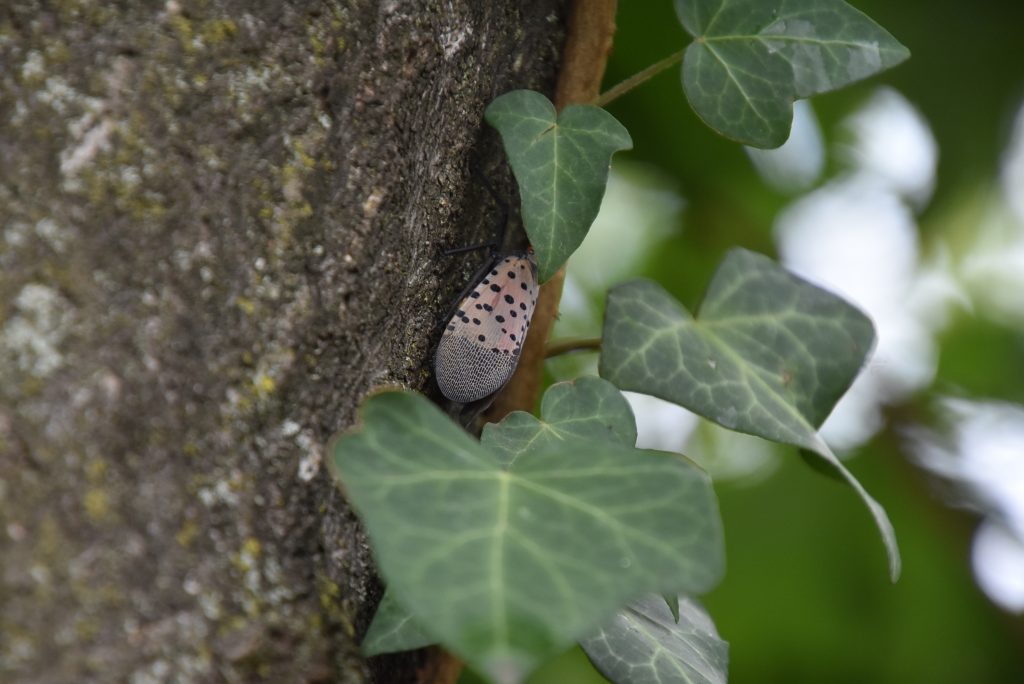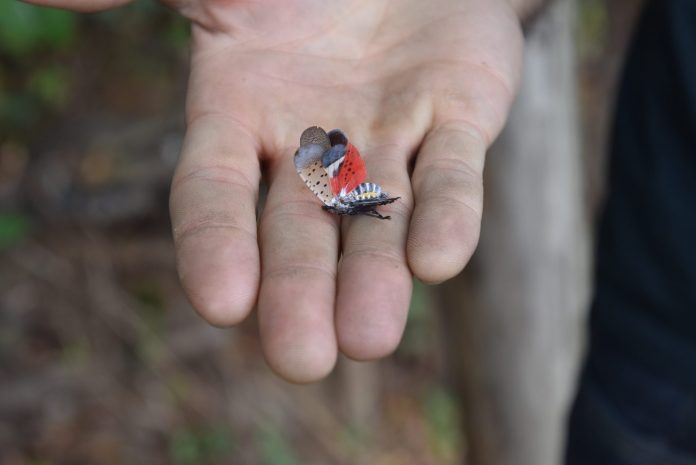They’ve been spotted in Northeast Philly.
Spotted Lanternflies, an invasive species officials believe pose an $18 billion threat to the state’s economy, have been popping up throughout the area.
They’re in Pennypack Park, according to Peter Kurtz, education program specialist at the Pennypack Environmental Center. And they’ve even infiltrated the parking lot next to the Philadelphia Insectarium and Butterfly Pavilion in Holmesburg.
In 2014, the insects, native to China, India and Vietnam, were discovered in Berks County, where they possibly hitched a ride on some landscaping stones.
However, it wasn’t until this year that Spotted Lanternflies began showing up in large numbers in Philadelphia.

Insectarium and Butterfly Pavilion CEO John Cambridge, who has a doctorate in entomology, said it’s not difficult to explain why the flies have spread so quickly.
“They got introduced into an area that — here — had the proper climate for them to establish, happened to have one of their primary host species already established as an invasive species, and they don’t have natural predators over here,” he said. “So nothing in our environment knows to eat them right now.”
Spotted Lanternflies, which grow to about 1-inch long and are characterized by their colorful wings with black dots, suck the sap out of fruit trees, leaving a grayish or black trail in their wake, according to Penn State Extension.
The bugs also leave behind what is known as honeydew, which, along with the sap, can lead to the growth of sooty mold. Researchers say the mold can stunt plant growth, and trees with large numbers of Spotted Lanternflies may die.
It’s believed the flies present the greatest risk to the grape, hops and hardwood industries, according to the state Department of Agriculture.
Penn State Extension, the PDA and the U.S. Department of Agriculture have teamed up to contain the insect’s spread.
A quarantine is in place for all counties in southeastern Pennsylvania. Companies shipping goods in and out of the area are required to obtain a special permit and training course.
Kurtz, of Fox Chase, said he has identified the flies in his backyard and during birding excursions in Pennypack.
“I have seen them, but I have not seen huge numbers,” he said.
Spotted Lanternflies prefer to feed on tree-of-heaven, or Ailanthus trees, which are native to Asia and were introduced to Philadelphia in the 18th century, Penn State researchers say. Kurtz said Pennypack has tree-of-heaven sporadically throughout the park.
What worries Kurtz is the possibility that the Northeast could see an explosion of flies in the years to come. In Wissahickon Valley Park, he has seen trees covered with hundreds of lanternflies.
“That’s what we could be in for,” Kurtz said. “It’s unfortunate.”
Now is a critical time in the fight to contain the bugs, he added. Spotted Lanternflies will be laying their eggs through December. The egg masses, which Cambridge described as looking like “rock snot,” resemble white putty and can appear on trees or any hard surfaces. Eggs won’t begin to hatch until April.
Kurtz urged park-goers to scrape the eggs off of trees and kill any Spotted Lanternflies.
“They’re harmless to people,” he said. “They can’t bite. They don’t sting. You can squash them with your hand and the most you’re going to get is a little bit of a mess.”
Cambridge believes the public should take a different approach. Killing a few individual insects — or even 20 — is not going to do much to curb the population of Spotted Lanternflies, he said.
As head of the insectarium, he’s bothered by the bloodlust exhibited by some lanternfly hunters who have taken to social media to show off their kills. Instead, people should become knowledgeable about the flies and other invasive species, Cambridge said.
People should “try and understand the system, and look more closely at their actions, in terms of transporting it to new areas or what they may be supporting that is a negative influence,” he said.
State officials, in contrast, have told people to kill any Spotted Lanternflies.
In addition, PDA has urged travelers to inspect their vehicles before driving to an area where the flies haven’t been detected yet. Penn State Extension has developed a guide for homeowners trying to manage the insects.
Kurtz has heard reports of birds beginning to eat the flies in Pennypack, which could be a good sign.
“I’m hoping it doesn’t get a lot worse next year,” he said. ••






